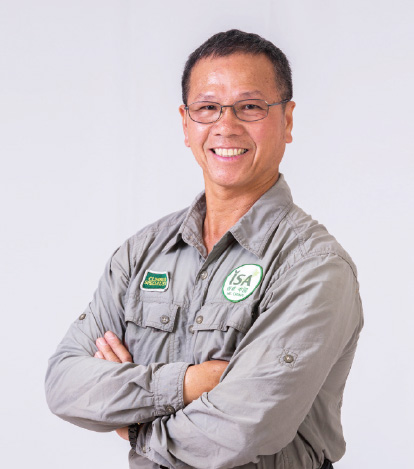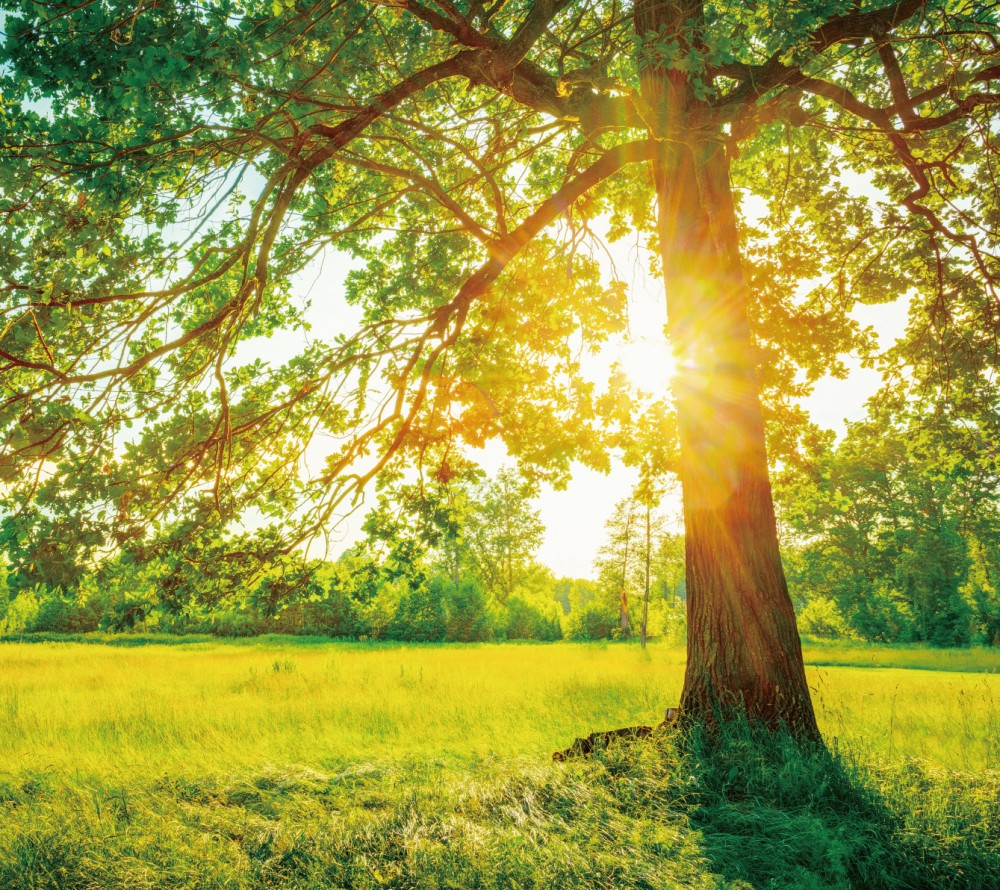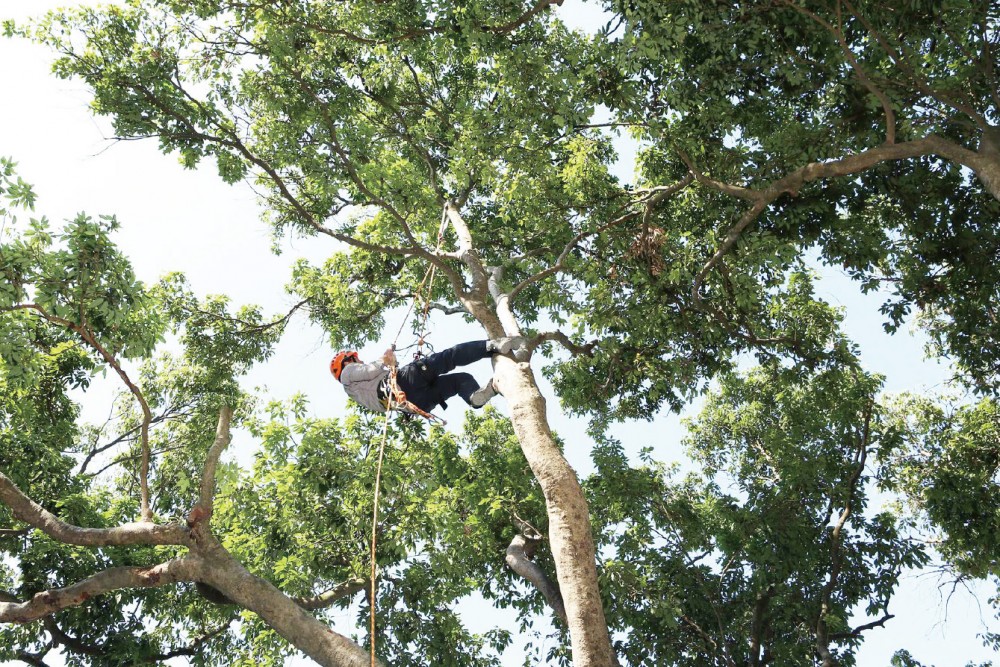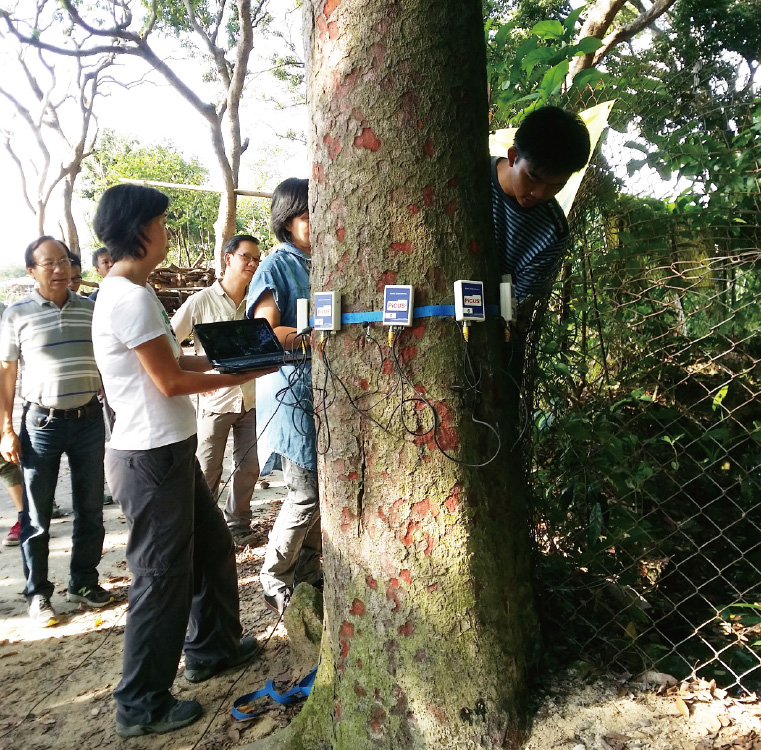In the aftermath of fierce typhoons, workers are always busy with cleaning up fallen trees littering our streets such that the normal operation of our society can resume as soon as possible. Amongst these workers are some arboriculture professionals, including arborists and tree workers. What exactly do they do? What is the prospect of the industry?
 “The work of arborists and tree workers is highly professional. To work on a commissioned task, they must be equipped with specialist knowledge, adequate experience and professional certification,” says K M Lee, Chairman of TCHK.
“The work of arborists and tree workers is highly professional. To work on a commissioned task, they must be equipped with specialist knowledge, adequate experience and professional certification,” says K M Lee, Chairman of TCHK.
While many of us think all trees look more or less the same, arborists must possess the theoretical knowledge for identifying some 200 to 300 indigenous tree species, and at the same time, be able to operate different inspection tools for treating and caring for trees.
Tree workers, on the other hand, take charge of climbing up trees to locate issues, remove withered branches, prune and treat weak branches. They must also have mastery of different tools. The two professions complement each other and solve tress issues together through communication.
Qualified frontline talents highly sought after and enjoy bright prospects
 According to Lee, there are now more than 1,200 arborists and 300 tree workers in Hong Kong. While the number increases every year, arboriculture workers are still short in supply. With typhoons hitting Hong Kong from time to time, tree-falling is inevitable. Meanwhile, incorporating green elements in infrastructures is much valued in modern day urban planning. As a result, tree conservation is increasingly important, and frontline talents are highly sought after. Opportunities abound in the arboriculture industry.
According to Lee, there are now more than 1,200 arborists and 300 tree workers in Hong Kong. While the number increases every year, arboriculture workers are still short in supply. With typhoons hitting Hong Kong from time to time, tree-falling is inevitable. Meanwhile, incorporating green elements in infrastructures is much valued in modern day urban planning. As a result, tree conservation is increasingly important, and frontline talents are highly sought after. Opportunities abound in the arboriculture industry.
As for compensation and prospects, entry-level arborists earn about HKD15,000 a month, while those with five or six years of experience are paid up to HKD30,000 monthly. Novice tree workers earn HKD18,000 at the beginning, and the figure goes up with experience. After three to four years, one could be promoted to managerial positions like an arboriculture manager or a project manager, who are usually paid HKD40,000 or above.

Introducing registration system and organizing courses for qualification
 In the past, there are no professional credentials for arborists or tree workers in Hong Kong. To become a professionally certified arborist or tree worker, one has to pass the exams offered by the International Society of Arboriculture (ISA). Relevant registration systems, however, were gradually introduced since 2005.
In the past, there are no professional credentials for arborists or tree workers in Hong Kong. To become a professionally certified arborist or tree worker, one has to pass the exams offered by the International Society of Arboriculture (ISA). Relevant registration systems, however, were gradually introduced since 2005.
Lee founded TCHK in 2007. He organizes different arboriculture programs such that students who aspire to work in arboriculture can build a strong foundation and earn professional certification. After graduating from these programs, students can be recruited by government departments, or companies engaged in greening projects, horticulture or arboriculture. A wide spectrum of job opportunities is available.
Experience and resilience to extreme weather conditions essential for landing the first job
 Arboriculture programs are not only offered by TCHK, but also other educational institutes, such as Hong Kong Baptist University, the Vocational Training Council, Hong Kong Institute of Vocational Education and Technological and Higher education Institute of Hong Kong. Lee alerted readers that, “These programs are focused on tree management and tend to be more about what is going on in the backend. The programs of TCHK, in contract, are more practical and more frontline. Their approaches are different.”
Arboriculture programs are not only offered by TCHK, but also other educational institutes, such as Hong Kong Baptist University, the Vocational Training Council, Hong Kong Institute of Vocational Education and Technological and Higher education Institute of Hong Kong. Lee alerted readers that, “These programs are focused on tree management and tend to be more about what is going on in the backend. The programs of TCHK, in contract, are more practical and more frontline. Their approaches are different.”
Lee added that those who want to become arborists or tree workers should be prepared to accumulate essential frontline experience. Arborists shall gain three years of work experience, and tree workers, 1.5 years. “The work is not easy at all. Those who want to join the industry should be prepared for it.”
That said, Lee did show some pride when he talked about the significance of his work. “Arboriculture is an industry to work side by side with trees. Our job is to save and help trees. We are protecting public safety, too.”




